
The Man Who Mistook His Wife for a Hat and Other Clinical Tales is a 1985 book by neurologist Oliver Sacks describing the case histories of some of his patients. Sacks chose the title of the book from the case study of one of his patients who has visual agnosia, a neurological condition that leaves him unable to recognize faces and objects. The book became the basis of an opera of the same name by Michael Nyman, which premiered in 1986.

Clive James was an Australian critic, journalist, broadcaster, writer and lyricist who lived and worked in the United Kingdom from 1962 until his death in 2019. He began his career specialising in literary criticism before becoming television critic for The Observer in 1972, where he made his name for his wry, deadpan humour.
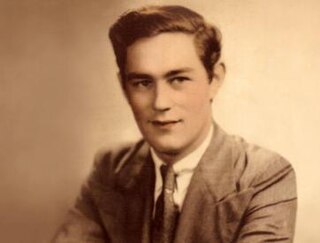
Henry Gustav Molaison, known widely as H.M., was an American who had a bilateral medial temporal lobectomy to surgically resect the anterior two thirds of his hippocampi, parahippocampal cortices, entorhinal cortices, piriform cortices, and amygdalae in an attempt to cure his epilepsy. Although the surgery was partially successful in controlling his epilepsy, a severe side effect was that he became unable to form new memories. His unique case also helped define ethical standards in neurological research, emphasizing the need for patient consent and the consideration of long-term impacts of medical interventions. Furthermore, Molaison's life after his surgery highlighted the challenges and adaptations required for living with significant memory impairments, serving as an important case study for healthcare professionals and caregivers dealing with similar conditions.
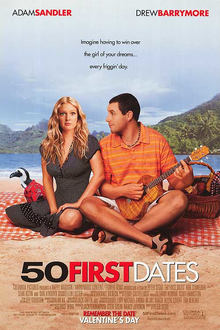
50 First Dates is a 2004 American romantic comedy film directed by Peter Segal and starring Adam Sandler and Drew Barrymore, with Rob Schneider, Sean Astin, Lusia Strus, Blake Clark and Dan Aykroyd in supporting roles. It follows the story of Henry Roth, a womanizing marine veterinarian who falls for an art teacher named Lucy Whitmore. When he discovers she has amnesia, and forgets him when she falls asleep, he resolves to win her over again each new day.
In neurology, anterograde amnesia is the inability to create new memories after an event that caused amnesia, leading to a partial or complete inability to recall the recent past, while long-term memories from before the event remain intact. This is in contrast to retrograde amnesia, where memories created prior to the event are lost while new memories can still be created. Both can occur together in the same patient. To a large degree, anterograde amnesia remains a mysterious ailment because the precise mechanism of storing memories is not yet well understood, although it is known that the regions of the brain involved are certain sites in the temporal cortex, especially in the hippocampus and nearby subcortical regions.
In neurology, retrograde amnesia (RA) is the inability to access memories or information from before an injury or disease occurred. RA differs from a similar condition called anterograde amnesia (AA), which is the inability to form new memories following injury or disease onset. Although an individual can have both RA and AA at the same time, RA can also occur on its own; this 'pure' form of RA can be further divided into three types: focal, isolated, and pure RA. RA negatively affects an individual's episodic, autobiographical, and declarative memory, but they can still form new memories because RA leaves procedural memory intact. Depending on its severity, RA can result in either temporally graded or more permanent memory loss. However, memory loss usually follows Ribot's law, which states that individuals are more likely to lose recent memories than older memories. Diagnosing RA generally requires using an Autobiographical Memory Interview (AMI) and observing brain structure through magnetic resonance imaging (MRI), a computed tomography scan (CT), or electroencephalography (EEG).
Lacunar amnesia is the loss of memory about a specific event. This specific form of amnesia is caused by brain damage in the limbic system which is responsible for our memories and emotions. When the damage occurs it leaves a lacuna, or a gap, in the record of memory within the cortex region of the brain. There is a general belief that certain emotions from the lost memory may be triggered without the recollection of the event.
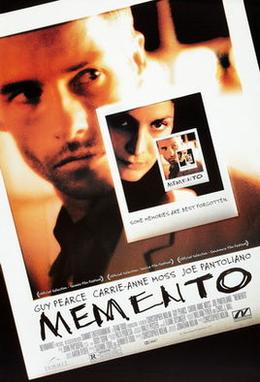
Memento is a 2000 American neo-noir mystery psychological thriller film written and directed by Christopher Nolan, based on the short story "Memento Mori" by his brother Jonathan Nolan, which was later published in 2001. Starring Guy Pearce, Carrie-Anne Moss, Jorja Fox and Joe Pantoliano, the film follows Leonard Shelby (Pearce), a man who suffers from anterograde amnesia—resulting in short-term memory loss and the inability to form new memories—who uses an elaborate system of photographs, handwritten notes, and tattoos in an attempt to uncover the perpetrator who killed his wife and caused him to sustain the condition.

Transient global amnesia (TGA) is a neurological disorder whose key defining characteristic is a temporary but almost total disruption of short-term memory with a range of problems accessing older memories. A person in a state of TGA exhibits no other signs of impaired cognitive functioning but recalls only the last few moments of consciousness, as well as possibly a few deeply encoded facts of the individual's past, such as their childhood, family, or home perhaps.
Memory disorders are the result of damage to neuroanatomical structures that hinders the storage, retention and recollection of memories. Memory disorders can be progressive, including Alzheimer's disease, or they can be immediate including disorders resulting from head injury.
The Caretaker was a long-running project by English ambient musician, James Leyland Kirby. His work as the Caretaker is characterized as exploring memory and its gradual deterioration, nostalgia, and melancholia. The project was inspired by the haunted ballroom scene in the 1980 film The Shining. His first several releases comprised treated and manipulated samples of 1930s ballroom pop recordings. Most of his album covers were painted by one of his friends, Ivan Seal.
Hyperthymesia, also known as hyperthymestic syndrome or highly superior autobiographical memory (HSAM), is a condition that leads people to be able to remember an abnormally large number of their life experiences in vivid detail. It is extraordinarily rare, with only 62 people in the world having been diagnosed with the condition as of 2021. One who has hyperthymesia is called a hyperthymesiac.

An Anthropologist on Mars: Seven Paradoxical Tales is a 1995 book by neurologist Oliver Sacks consisting of seven medical case histories of individuals with neurological conditions such as autism and Tourette syndrome. An Anthropologist on Mars follows up on many of the themes Sacks explored in his 1985 book, The Man Who Mistook His Wife for a Hat, but here the essays are significantly longer and Sacks has more of an opportunity to discuss each subject with more depth and to explore historical case studies of patients with similar symptoms. In addition, Sacks studies his patients outside the hospital, often traveling considerable distances to interact with his subjects in their own environments. Sacks concludes that "defects, disorders, [and] diseases... can play a paradoxical role, by bringing out latent powers, developments, evolutions, forms of life that might never be seen, or even be imaginable, in their absence".
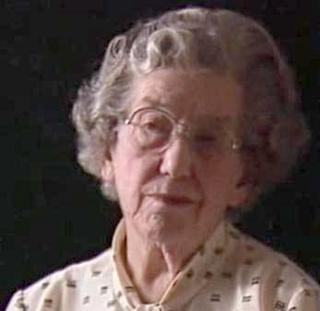
Eva Miriam Hart MBE was a British woman who was one of the last remaining survivors of the sinking of RMS Titanic on 14 April 1912.

Novo is a 2002 romantic comedy film directed by Jean-Pierre Limosin and starring Eduardo Noriega. The film tells the story of a man who suffers from amnesia. It screened at the Locarno Film Festival.

"Benjaman Kyle" was the alias chosen by an American man who had severe amnesia. On August 31, 2004, he was found naked and injured, without any possessions or identification, next to a dumpster behind a Burger King restaurant in Richmond Hill, Georgia. Between 2004 and 2015, neither he nor the authorities determined his identity or background, despite searches that had included television publicity and various other methods.
Kent Cochrane, also known as Patient K.C., was a widely studied Canadian memory disorder patient who has been used as a case study in over 20 neuropsychology papers over the span of 25 years. In 1981, Cochrane was involved in a motorcycle accident that left him with severe anterograde amnesia, as well as temporally graded retrograde amnesia. Like other amnesic patients, Cochrane had his semantic memory intact, but lacked episodic memory with respect to his entire past. As a case study, Cochrane has been linked to the breakdown of the single-memory single-locus hypothesis regarding amnesia, which states that an individual memory is localized to a single location in the brain.
Amnesia is a deficit in memory caused by brain damage or brain diseases, but it can also be temporarily caused by the use of various sedative and hypnotic drugs. The memory can be either wholly or partially lost due to the extent of damage that is caused.

Take Care. It's a Desert Out There... is the eleventh studio album by the Caretaker, an alias of musician Leyland Kirby. Released on 8 December 2017, Kirby composed it after the death of his collaborator, Mark Fisher, who died by suicide on January 13, 2017 at age 48. Consisting of a single title track throughout its 48-minute runtime, its proceeds would be donated to the mental health charity Mind. Kirby's initial intention would be to give the record to attendants of his performance at the Barbican Hall in London. However, due to a high demand, he decided to release it on his YouTube channel.
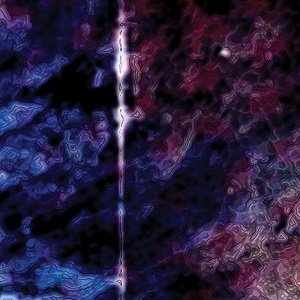
Theoretically Pure Anterograde Amnesia is the fourth studio album by the Caretaker, an alias of musician Leyland Kirby. Released in 2005, it abandoned the haunted ballroom aesthetic of the previous albums and explored memory loss. Divided into six CDs, it consists of seventy-two drone tracks combined to create a five-hour long release. It was compared by several critics to other musicians, including Merzbow, Boards of Canada, and Krzysztof Penderecki.












